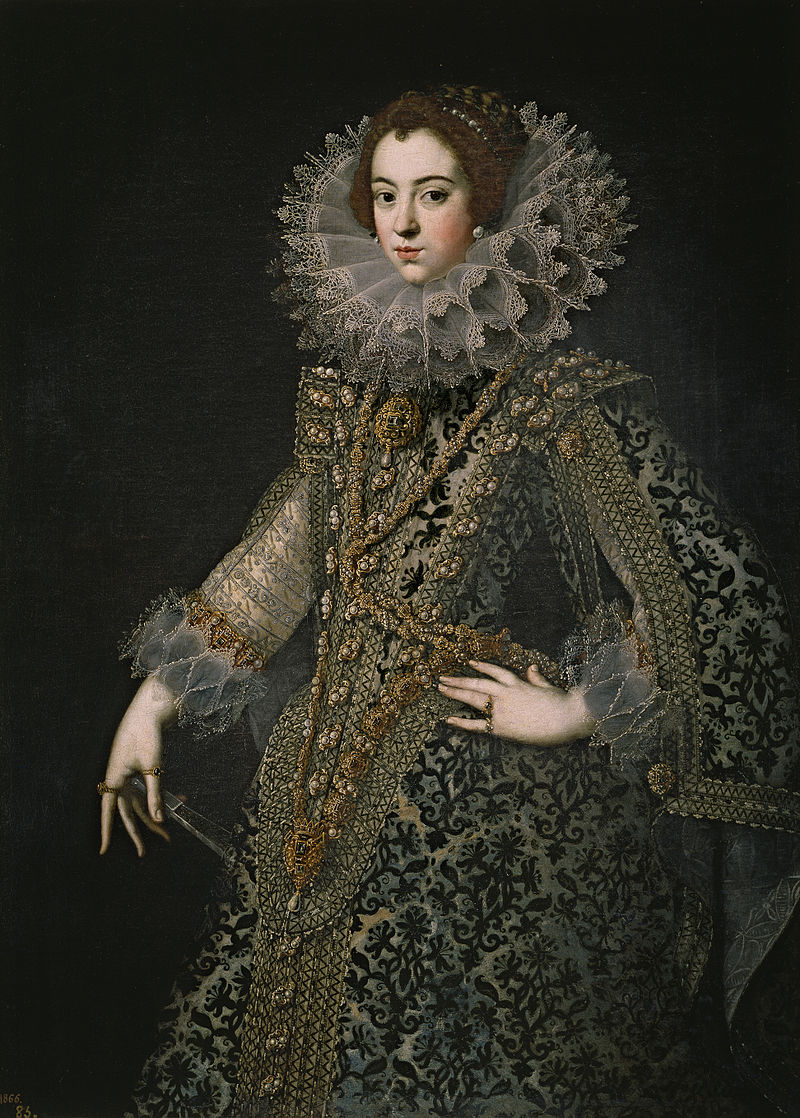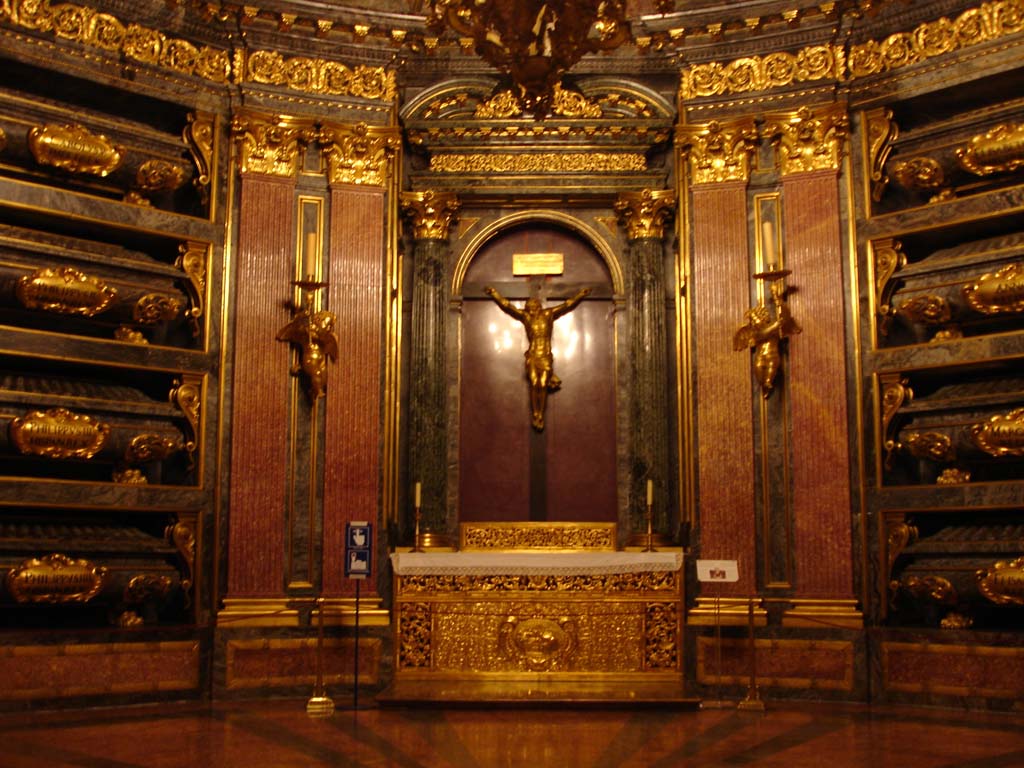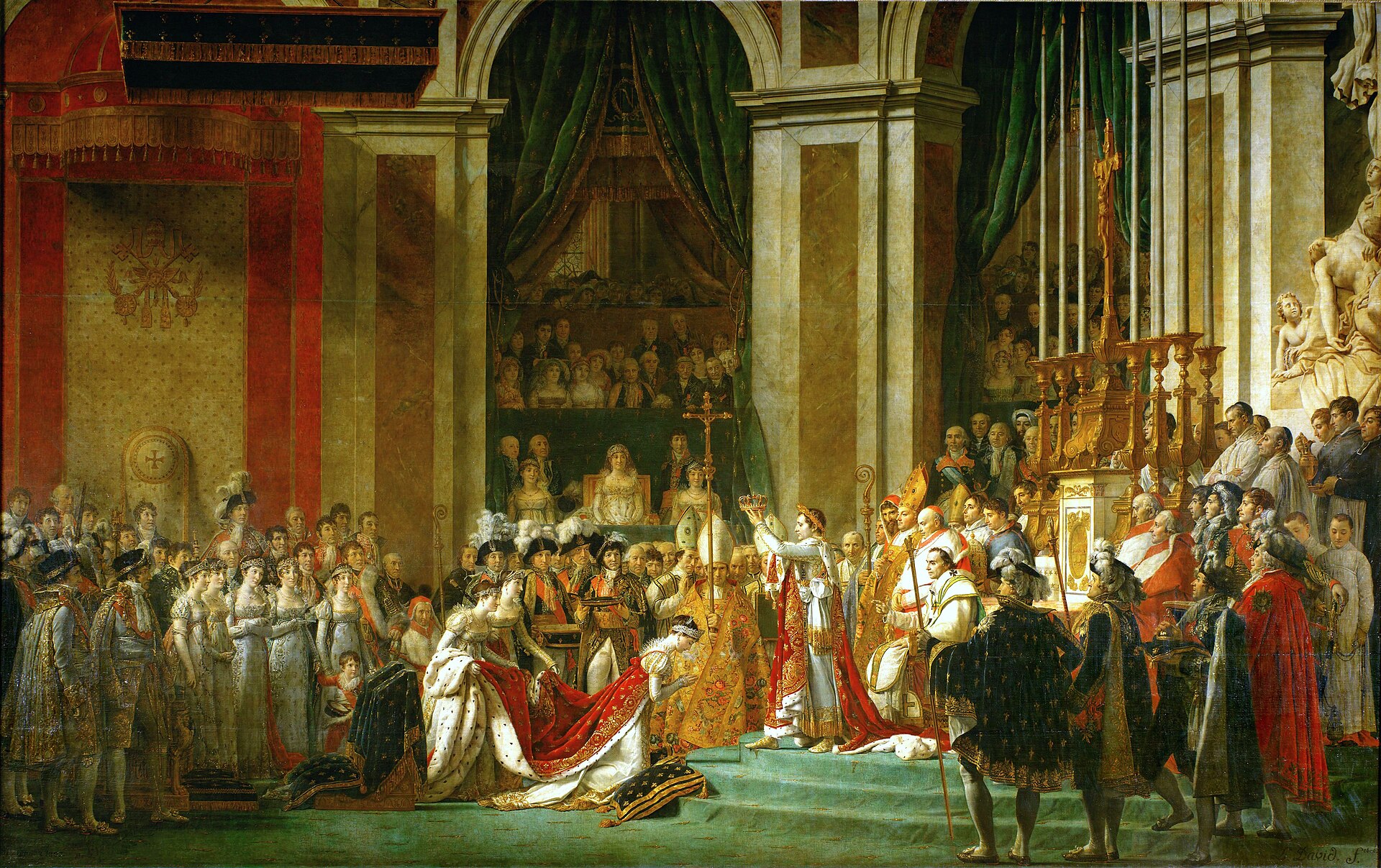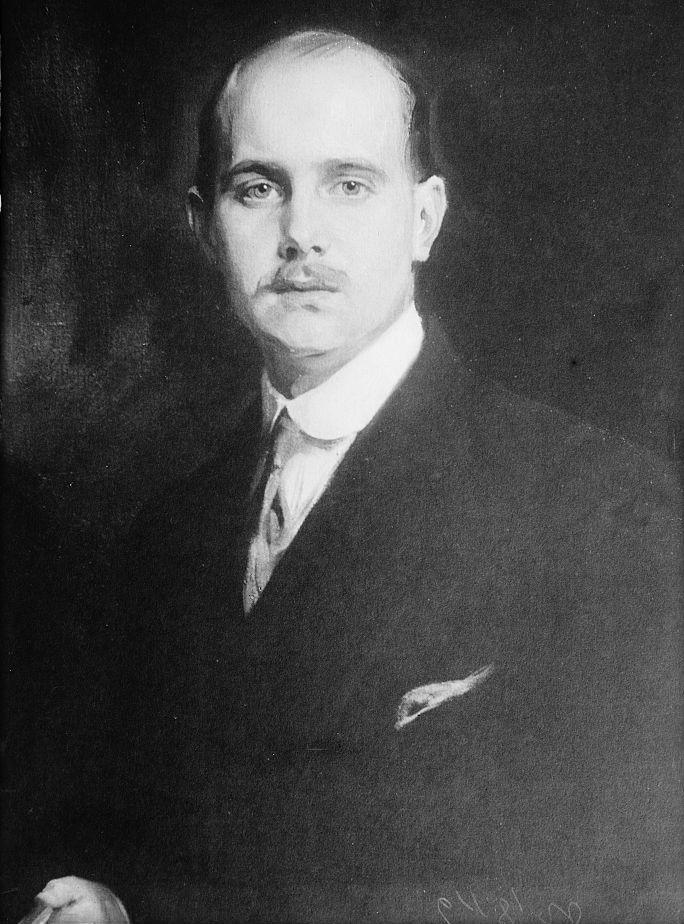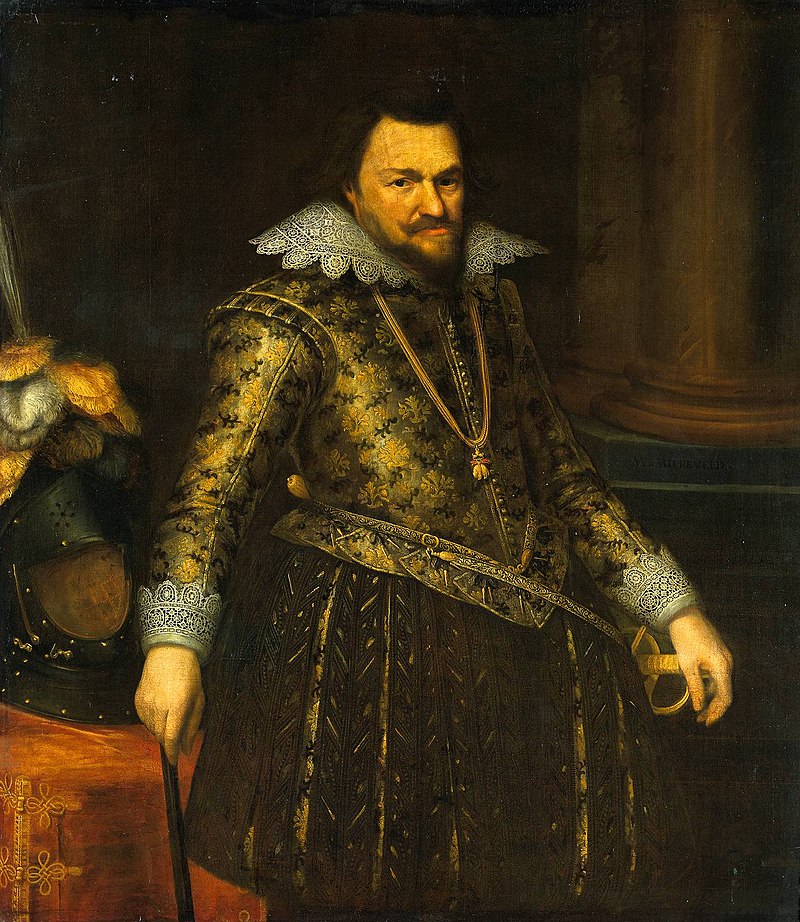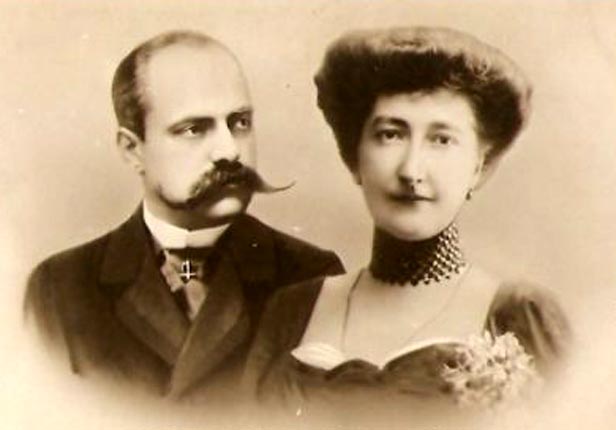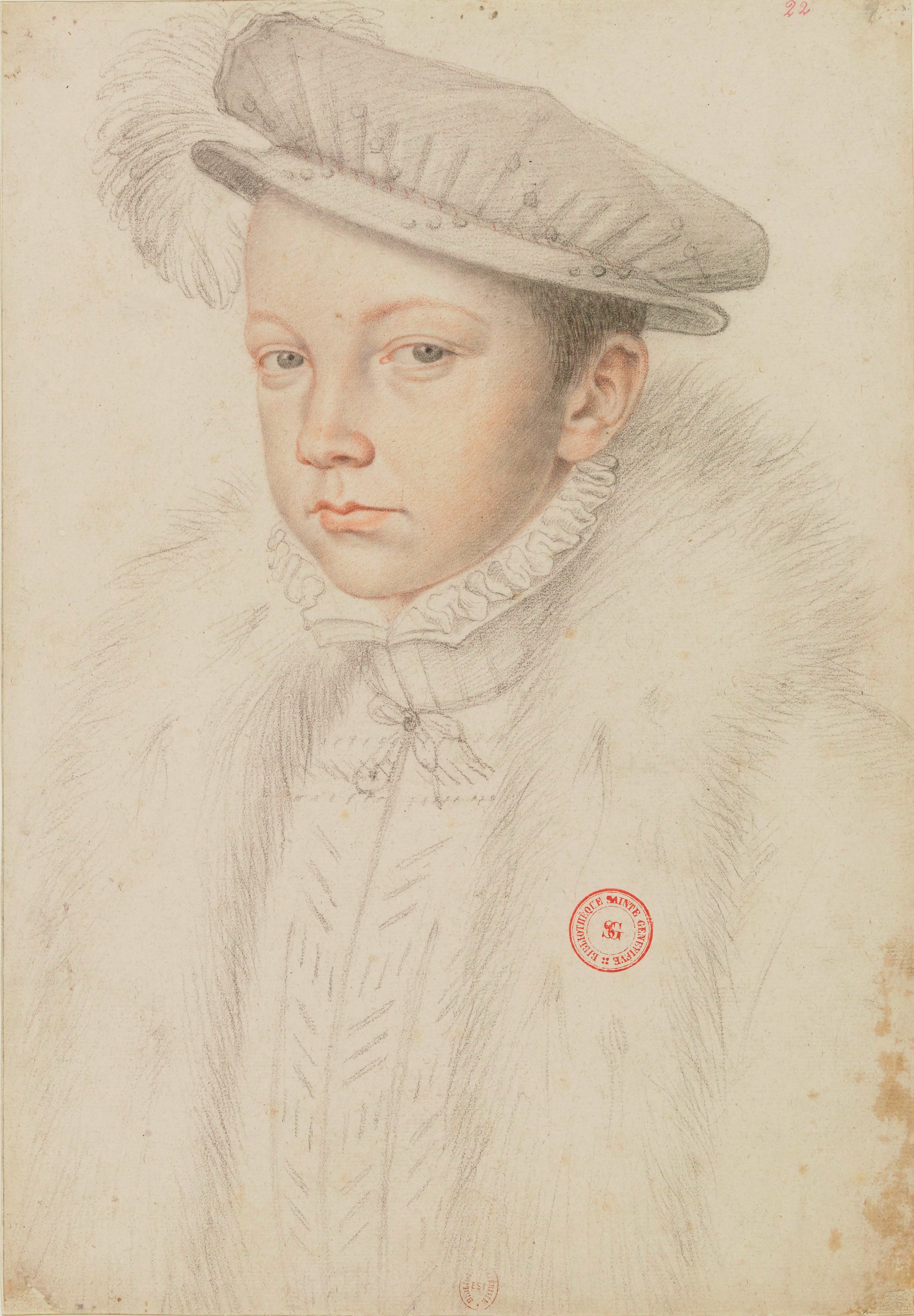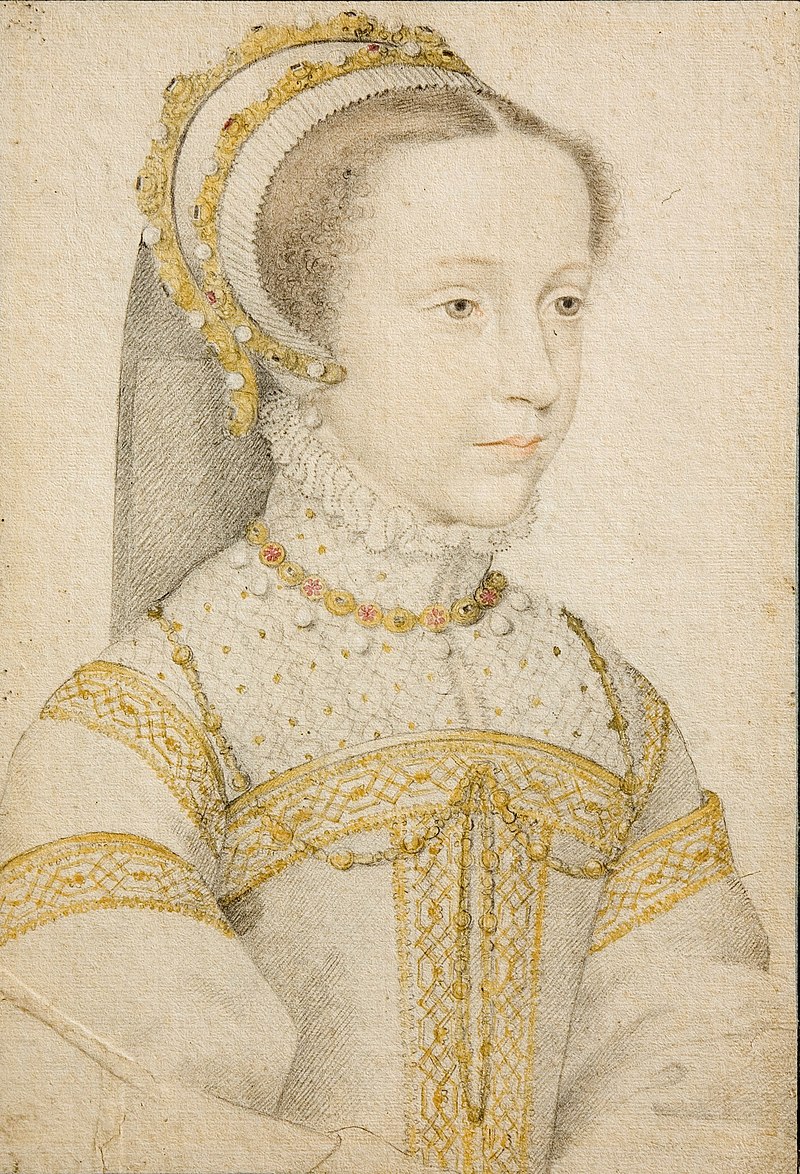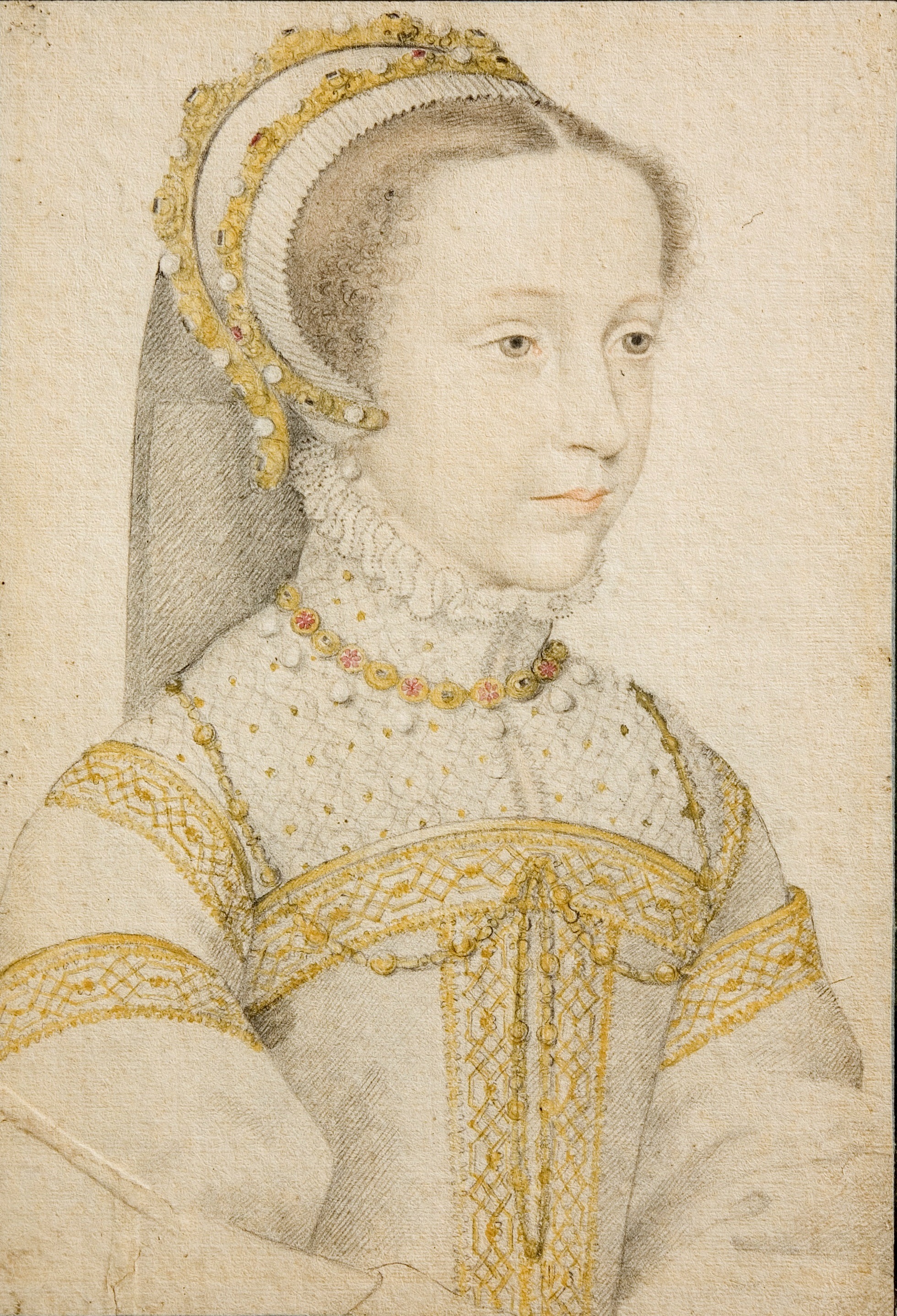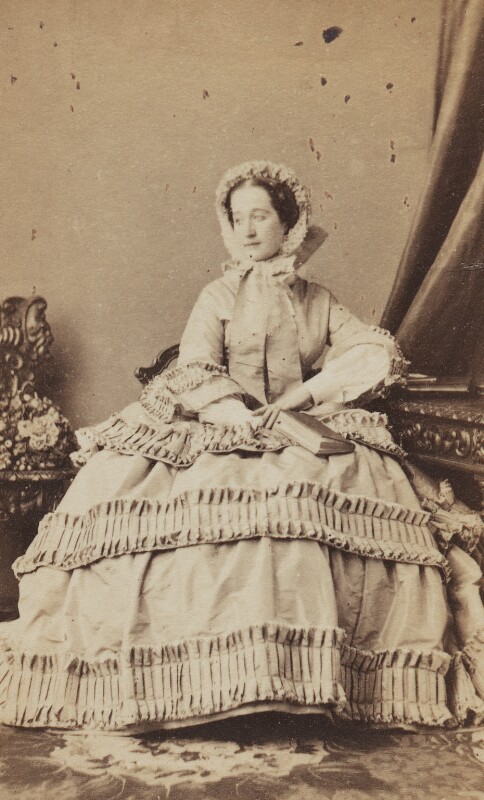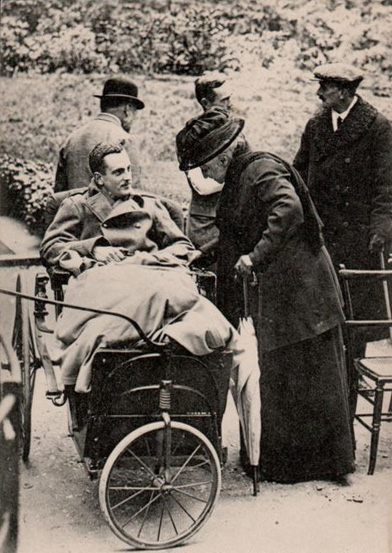by Susan Flantzer © Unofficial Royalty 2019
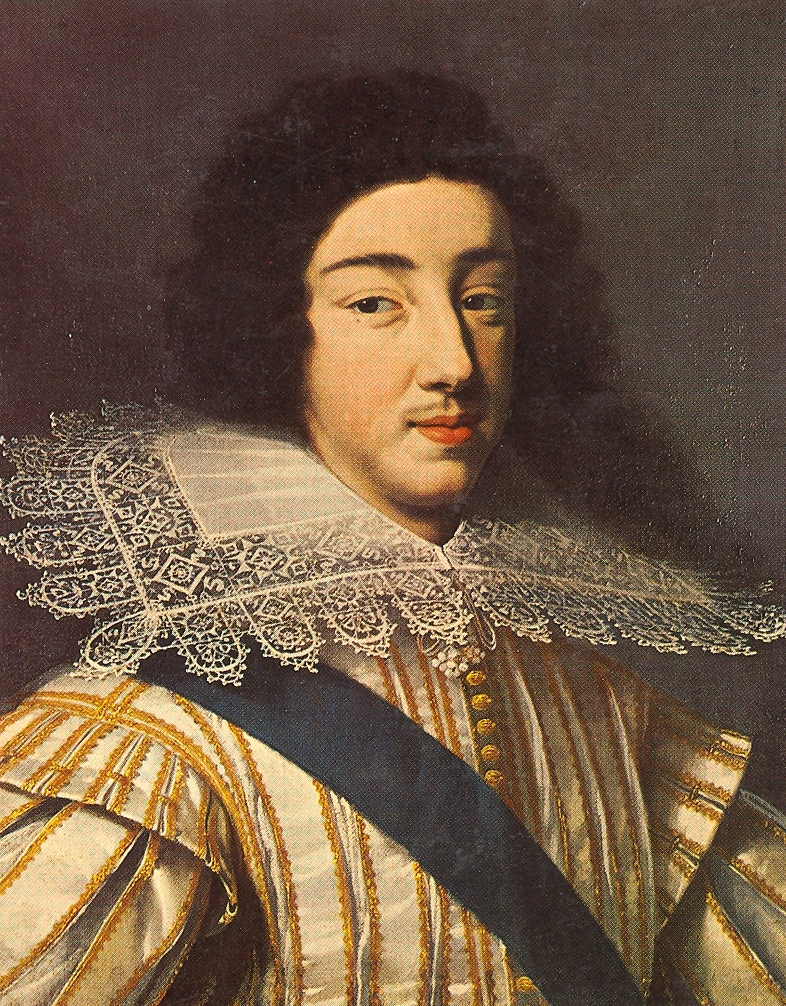
Gaston of France, Duke of Orléans; Credit – Wikipedia
Gaston, Duke of Orléans could be considered the black sheep of his family. He had to leave France twice for conspiring against the government of his brother, King Louis XIII. When his brother refused to grant permission for Gaston to marry Marguerite of Lorraine after the death of his first wife, Gaston married her anyway and kept the marriage secret. Because of his participation against the government in a series of civil wars, Gaston was exiled to one of his homes for the last seven years of his life.
Gaston, Duke of Orléans was born on April 24, 1608, at the Château de Fontainebleau in Fontainebleau, France. He was the third but the second surviving of the three sons and the fifth of the six children of Henri IV, King of France and his second wife, Marie de’ Medici. At birth, he was given the title of Duke of Anjou. During the reign of his brother King Louis XIII, Gaston was known as Monsieur, the title used by the eldest living brother of the King of France. Gaston was raised with his siblings by the royal governess Françoise de Montglat at the Château de Saint-Germain-en-Laye outside of Paris.
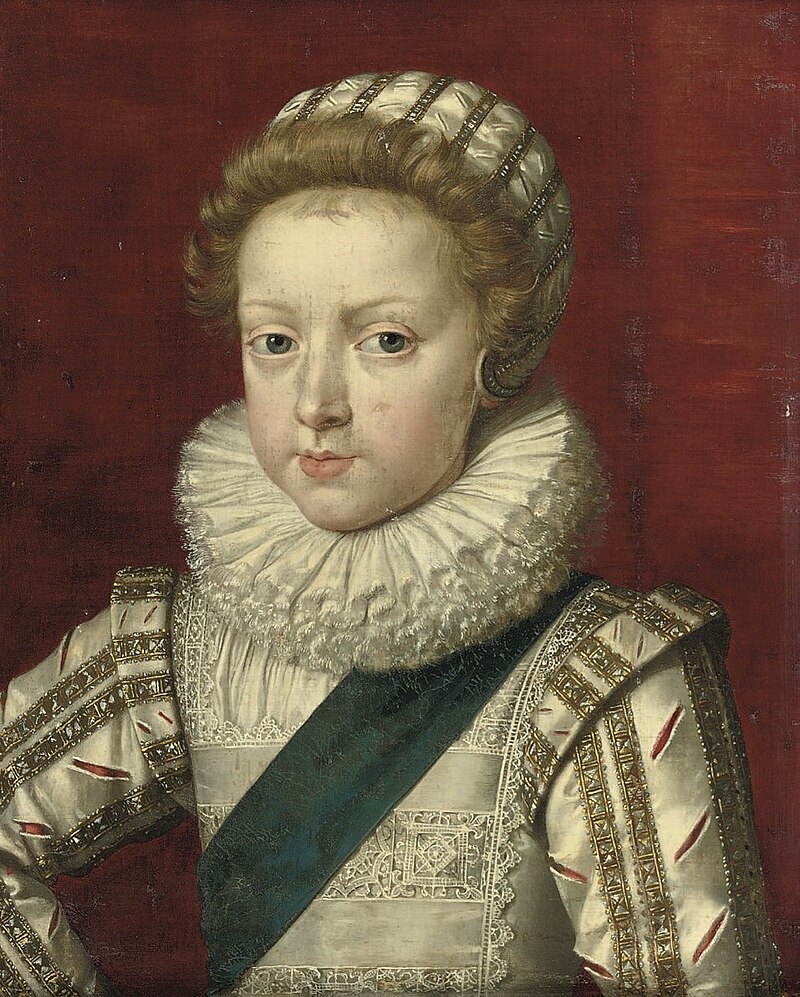
Gaston as a young boy; Credit – Wikipedia
Gaston had five siblings:
- King Louis XIII of France (1601 – 1643), married Anne of Austria. Infanta of Spain, had two surviving sons, including King Louis XIV of France
- Elisabeth of France (1602 – 1644) married Felipe IV, King of Spain, had one surviving daughter, Marie Theresa of Austria, Infanta of Spain, who married her first cousin, King Louis XIV of France
- Christine of France (1606 – 1663), married Vittoria Amadeo I, Duke of Savoy, had seven children
- Nicolas Henri, Duke of Orléans (1607 – 1611), died in childhood
- Henrietta Maria of France (1609 – 1669), married King Charles I of England, had four surviving children, including King Charles II of England and King James II of England

King Henri IV with his second wife Marie de’ Medici and their children; Credit – Wikipedia
On May 14, 1610, when Gaston was two years old, his father, King Henri IV of France was assassinated. While traveling through Paris, Henri’s carriage was stopped on the Rue de Ferronnerie. A Catholic zealot, François Ravaillac, took the opportunity to rush up to the carriage and stab the king twice in the chest. Quickly subdued, Ravaillac was taken into custody and later executed. The king was taken to the Palais du Louvre, where he died. Gaston’s nine-year-old brother ascended the French throne as King Louis XIII. The widowed Queen, Marie de’ Medici was appointed Regent for her son.
After the death in 1611 of his elder brother Nicolas Henri, Gaston became the heir presumptive to the French throne. King Louis XIII, Gaston’s brother, and his wife Queen Anne produced only four stillborn children during the first twenty-three years of their marriage. In 1638, the King and Queen finally had a son who would become King Louis XIV. Because Gaston was the heir to the throne for so long, ambitious nobles repeatedly involved him in their plots against his brother’s prime ministers Cardinal Richelieu and Cardinal Mazarin.

Marie de Bourbon, Duchess of Montpensier, Gaston’s first wife; Credit – Wikipedia
On August 6, 1626, when he was eighteen years old, Gaston was married against his will to the immensely wealthy Marie de Bourbon, Duchess of Montpensier, in her own right. At the time of his marriage, Gaston was created Duke of Orléans. Marie was the only child of Henri de Bourbon, Duke of Montpensier and Henriette Catherine de Joyeuse, Duchess of Joyeuse in her own right. Despite Gaston’s aversion to the marriage, King Louis XIII and Cardinal Richelieu were determined that the marriage should take place because of the Duchess of Montpensier’s fortune. The marriage lasted less than a year. On May 29, 1627, Marie gave birth to a daughter and then died a few days later, on June 4, 1627, at the Palais du Louvre in Paris at the age of twenty-one. Her infant daughter, Anne Marie Louise, inherited her mother’s fortune and titles. Anne Marie Louise never married, and when she died in 1693, her fortune was handed over to Philippe I, Duke of Orléans, King Louis XIV’s only sibling.

Gaston’s daughter Anne Marie Louise of Orléans, Duchess of Montpensier; Credit – Wikipedia
Gaston and Marie had one daughter:
- Anne Marie Louise of Orléans, Duchess of Montpensier, later called the Grande Mademoiselle (1627 – 1693), unmarried
In 1631, Gaston was living in the Duchy of Lorraine, escaping from the wrath of Cardinal Richelieu. There, he fell in love with Marguerite of Lorraine, daughter of François II, Duke of Lorraine and Christina of Salm. At the time, Marguerite’s brother Charles IV was the Duke of Lorraine. The Kingdom of France and the Duchy of Lorraine were enemies, and King Louis XIII refused to grant his brother permission to marry Marguerite. Despite this, Gaston and Marguerite were married in a secret ceremony in the presence of her family on January 2, 1632.

Gaston in 1634; Credit – Wikipedia
Later in 1632, the marriage was revealed to King Louis XIII and Cardinal Richelieu by Henri II, Duke of Montmorency, a former ally of Gaston, shortly before his execution. Gaston’s marriage was declared void by a French court in September 1634, and an assembly of the French clergy agreed with the court’s decision because a Prince of the Blood, especially an heir to the throne, could only marry with the king’s permission. Gaston had no choice but to accept the annulment of his marriage.

Marguerite of Lorraine, Gaston’s second wife; Credit – Wikipedia
When King Louis XIII was on his deathbed in May 1643, he forgave Gaston and permitted him to marry Marguerite. In July 1643, Gaston and Marguerite were married by Jean-François de Gondi, Archbishop of Paris, and the Duke and Duchess of Orléans were finally received at court. When Gaston’s mother died in 1642, she bequeathed to him the Luxembourg Palace that she had purchased for her residence after her husband was assassinated. This became the couple’s residence in Paris.
Gaston and Marguerite had five children, all born after their 1643 marriage. Only three daughters survived childhood:
- Marguerite Louise of Orléans (1645 – 1721) married Cosimo III de’ Medici, Grand Duke of Tuscany, had three children whose marriages were all childless
- Élisabeth Marguerite of Orléans (1646 – 1696) married Louis Joseph of Lorraine, Duke of Guise, had one son who died in childhood
- Françoise Madeleine of Orléans (1648 – 1664) married her maternal first cousin Carlo Emanuele II, Duke of Savoy, no children
- Jean Gaston of Orléans, Duke of Valois (1650 – 1652) died in early childhood
- Marie Anne of Orléans (1652 – 1656) died in early childhood
From 1628 – 1653, a series of civil wars, called The Fronde, occurred in France. During these civil wars, there was a rebellion against the government by members of the nobility and discontented citizens of Paris. Eventually, the government of King Louis XIV triumphed. Gaston had moved indecisively from one side to the other during the wars, and after The Fronde was over, he was exiled to one of his homes, the Château de Blois, where he remained for the rest of his life.
Gaston, Duke of Orléans died February 2, 1660, at the Château de Blois at the age of 51. He was buried at the Basilica of St. Denis, the traditional burial place of the French royals, in St. Denis, a suburb of Paris. Gaston’s wife Marguerite survived her husband by twelve years, dying April 13, 1672, at the age of 56, and was also buried at the Basilica of St. Denis.

Memorial to Gaston at the Basilica of St. Denis; Credit – Von Thomon – Eigenes Werk, CC BY-SA 4.0, https://commons.wikimedia.org/w/index.php?curid=51345641
This article is the intellectual property of Unofficial Royalty and is NOT TO BE COPIED, EDITED, OR POSTED IN ANY FORM ON ANOTHER WEBSITE under any circumstances. It is permissible to use a link that directs to Unofficial Royalty.
Works Cited
- De.wikipedia.org. (2018). Gaston de Bourbon, duc d’Orléans. [online] Available at: https://de.wikipedia.org/wiki/Gaston_de_Bourbon,_duc_d%E2%80%99Orl%C3%A9ans [Accessed 28 Oct. 2018].
- En.wikipedia.org. (2018). Gaston, Duke of Orléans. [online] Available at: https://en.wikipedia.org/wiki/Gaston,_Duke_of_Orl%C3%A9ans [Accessed 28 Oct. 2018].
- https://fr.wikipedia.org/wiki/Gaston_de_France






